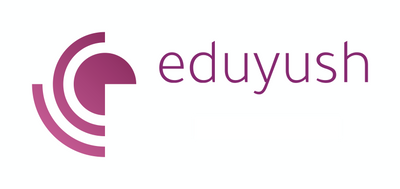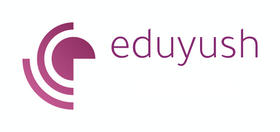CMA USA Course Details | Eligibility, Fees, and Study Guide
CMA USA Course: Step-by-Step Guide to Certification Success
The CMA USA course is a globally recognized credential for finance and accounting professionals seeking to excel in corporate finance and management accounting.
This blog breaks down the CMA USA course details into a step-by-step timeline, guiding you from entry to exam preparation, professional development, and career growth. Each phase is crucial for building your skills, acing the exam, and advancing your career.
What is the CMA US Course?
The Certified Management Accountant (CMA) USA certification is an advanced qualification that helps accounting professionals specialize in management and decision-making. Recognized across industries, the CMA course focuses on critical areas like budgeting, financial analysis, risk management, and strategic planning. The certification is precious for those seeking senior finance, accounting, and corporate strategy roles.
Why Choose the CMA US Course? Key Benefits and Career Opportunities"
The CMA USA certification is a highly sought-after qualification for finance professionals seeking an edge in corporate finance and management accounting. Here’s why pursuing the CMA USA course is a great choice:
- Global Recognition: The CMA USA course is recognized worldwide, opening doors to better career opportunities, especially in financial management roles.
- High Salary Potential: CMAs are often rewarded with higher salaries than non-certified peers.
- Skill Enhancement: The CMA USA course equips you with advanced financial management, strategic planning, and decision-making skills.
CMA USA course details
A. CMA USA course Entry Stage: Certification Overview & Eligibility Requirements
Becoming a Certified Management Accountant (CMA) starts with understanding the essential requirements and deciding if it aligns with your career goals.
Eligibility Requirements for CMA US Course
To enroll in the CMA USA program, candidates must meet the following eligibility requirements:
- Educational Background: A bachelor’s degree in any discipline from an accredited institution.
- Professional Experience: Two years of relevant work experience in management accounting or financial management. This experience can be completed before or within seven years of passing the exams.
- IMA Membership: Candidates must be Institute of Management Accountants (IMA) members.
These requirements ensure that CMA candidates have a foundational knowledge of accounting and financial management, preparing them for advanced coursework.Learn more about the detailed CMA US Eligibility Requirements and ensure you meet all the qualifications before starting your journey.
CMA US Course Syllabus Breakdown
The CMA USA syllabus is divided into two parts, each covering essential areas in management accounting and financial analysis. Here’s a closer look:
Part 1: Financial Planning, Performance, and Analytics
- External Financial Reporting: Understanding financial statements, reporting requirements, and disclosures.
- Planning and Budgeting: Techniques for operational and financial planning, including budgeting and forecasting.
- Performance Management: Performance measures, profitability analysis, and cost management.
- Cost Management: Costing methods, costing systems, and control measures.
- Internal Controls: Risk management, internal auditing, and system controls.
Part 2: Strategic Financial Management
- Financial Statement Analysis: Techniques for ratio analysis, financial statement interpretation, and data visualization.
- Corporate Finance: Investment decisions, risk and return, and long-term financial management.
- Decision Analysis: Quantitative and qualitative decision-making, cost-volume-profit analysis, and pricing decisions.
- Risk Management: Identifying and mitigating financial risks within organizations.
- Investment Decisions: Techniques for capital budgeting and investment analysis.
CMA vs CA: Which is Better for Your Career?
Choosing between CMA and CA can be difficult. Both are prestigious certifications, but their focus areas differ. The CMA is globally recognized and geared toward management accounting, while the CA focuses more on taxation and auditing. Explore CMA vs. CA to make an informed decision.
CMA vs CPA: Choosing the Right Path for Your Career
If you're comparing the CMA vs CPA certifications, it's essential to consider your career goals. The CMA is ideal for management and strategy-focused roles, while the CPA offers broader opportunities in accounting and auditing. Read more about CMA vs CPA to determine which path is right for you.
CMA USA course Work Experience Requirement
You'll need at least two years of work experience in a relevant field to obtain your CMA credential. This experience must be completed before or within seven years of passing the exam. Review the CMA Work Experience Requirement for details on qualifying experience.
B. Effective Study Tips and Exam Prep for the CMA US Course
Once you decide to pursue the CMA, the next step is preparing for the exam. The CMA exam consists of two parts, and proper preparation is critical to passing on your first attempt.
Online Classes for CMA USA by Surgent (Resold by Eduyush)
For those aiming for CMA success, Eduyush, a reseller of Surgent CMA Review, offers comprehensive CMA USA online classes with a 65% discount for students in India. Here are the key features:
- Proprietary Predictive AI Technology
- Pass rates over 95%
- ReadySCORE technology (real-time exam readiness)
- 4,000+ multiple-choice questions
- 65+ essay problems
- Unlimited practice exams
- Books included
- Free automatic content updates
- Accessible across all devices
- Intuitive mobile app (sync across platforms)
- 55+ video lectures
- 24-month course access
- Free 5 day demo
- Highly rated by students for efficiency and effectiveness
- Take the Surgent CMA Review: Renowned for its comprehensive content and adaptive learning. (Access India pricing via Eduyush here)
Wondering how to self-study for CMA US using AI tools? Get tips and resources for a personalized study plan
CMA Exam Study Plan: How to Master the Exam in 2025
A well-structured CMA Exam Study Plan is crucial for exam success. Learn how to allocate study hours, balance between the two exam parts, and keep track of your progress for adequate exam preparation.
CMA Exam High Yield Topics: Where to Focus
Focusing on high-yield topics can save you time and help you concentrate on the most critical areas. The CMA Exam High Yield Topics guide provides insights into the topics you should prioritize during your preparation.
CMA Exam Essay Questions: How to Master Them
The essay section can be daunting, but it’s manageable with the right approach. Learn How to Master CMA Exam Essay Questions to improve your performance on this crucial exam part.
CMA Part 1 Formula Sheet
Need a cheat sheet? The CMA Part 1 Formula Sheet provides formulas and equations essential for Part 1 of the exam, which covers Financial Planning, Performance, and Analytics.
CMA Part 1 or Part 2: Which to Take First?
Choosing between CMA Part 1 and Part 2 first depends on your strengths and weaknesses. Learn which section might be better to start with based on your background.
CMA Exam Tips: How to Pass on Your First Try in 2025
Passing the CMA exam on your first try is possible with the right strategies. Follow these CMA Exam Tips to boost your confidence and ensure success.
CMA Exam Pass Rates: Insights and Tips
The CMA Exam Pass Rates are around 45-50%, but you can improve your chances with strategic preparation and study habits.
CMA Performance Report: How to Interpret Exam Scores
Once you complete the exam, you’ll receive a performance report that breaks down your score. The CMA Performance Report will help you understand which areas you did well and where to improve.
CMA Syllabus Changes 2025: Key Updates
Stay informed about the latest updates to the CMA syllabus. The CMA Syllabus Changes 2025 includes any revisions to the content, ensuring that you're studying the most current material.
How to Master MCQs on the CMA Exam
Multiple-choice questions (MCQs) make up the bulk of the CMA exam. Learn How to Master MCQs on the CMA Exam to tackle this section confidently.
C. CMA US Course Exam Structure, Fees, and Important Dates
Knowing the exam structure and fees is essential for scheduling your exam and budgeting for the certification.
- Exam Parts: Part 1 (Financial Planning, Performance, and Analytics) and Part 2 (Strategic Financial Management)
- Question Types: Multiple-choice questions and essay questions
- Duration: 4 hours per exam part
- Passing Score: 360 out of 500 for each part
- Testing Windows: CMA exams are offered three times a year—January/February, May/June, and September/October.
CMA Exam Dates: Complete Guide for Your Test in 2025
The CMA Exam Dates are released annually, allowing candidates to choose their exam windows. To plan ahead, learn more about the scheduling options for 2025.
CMA Exam Fees. Updated for 2025
The CMA Exam Fees vary based on whether you are a student or professional IMA member.
CMA fees for Students
- IMA Membership: $49 (₹4,200)
- CMA Entrance Fee: $225 (₹19,200)
- CMA Part 1 Exam Fee: $370 (₹31,700)
- CMA Part 2 Exam Fee: $370 (₹31,700)
- Total for Students: $1,014 (₹87,000)
CMA Fees for Professionals
Fees are higher for professionals, reflecting career status and experience.
- IMA Membership: $295 (₹25,400)
- CMA Entrance Fee: $300 (₹25,800)
- CMA Part 1 Exam Fee: $495 (₹42,100)
- CMA Part 2 Exam Fee: $495 (₹42,100)
- Total for Professionals: $1,585 (₹135,000)
CMA Exam Pattern: Your Complete Guide
The CMA Exam Pattern consists of two parts, each containing 100 multiple-choice questions and two essay questions. Understanding the exam structure is essential for efficient preparation.
D. Understanding CMA US Exam Scoring and How to Interpret Your Results
After taking the exam, understanding how your scores are calculated and what they mean is crucial for assessing your performance.
CMA Exam Passing Score: How to Pass with Ease
- CMA Exam Passing Score: 360 out of 500 needed to pass each part.
- Scaled Scores: CMA scores are adjusted for difficulty across tests.
- MCQ Threshold: Answer 50% of MCQs to access the essay section.
- Weight Distribution: MCQs are 75%; essays are 25%.
E. Professional Development, CPE Requirements, and Renewal
Once you pass the CMA exam, maintaining your certification through continuous professional education (CPE) is essential.
CMA US CPE Requirements: Complete Guide
The CMA US CPE Requirements require the following:
- CPE Requirements: Earn 30 hours annually, including 2 hours in ethics.
- Certification Renewal: Renew CMA annually to meet CPE and fee requirements.
- Tracking CPE: Maintain accurate records of completed CPE hours.
- CPE Sources: Webinars, conferences, and self-study programs are accepted.
- Renewal Fees: An annual fee is required to keep CMA status active.
F. CMA US Career Path: Salary Expectations and Career Growth
The CMA credential opens doors to exciting career opportunities and higher salary potential.
- Roles: Financial Analyst, Management Accountant, Chief Financial Officer, Financial Controller
- Average Salary: $80,000–$150,000 per year, depending on experience and location
- Salary Increase: CMAs generally earn 30–50% more than non-certified peers
US CMA Salary in India: What You Can Earn as a CMA
As a CMA, you can expect a competitive salary, particularly in emerging markets like India. The US CMA Salary in India provides a detailed overview of salary expectations for certified professionals.
CMA Interview Questions: What to Expect
Preparing for a CMA interview is crucial to landing your desired role. Our CMA Interview Questions blog provides insight into common questions and tips on how to respond effectively, helping you make a great impression during your interviews.
Related Articles on Key Certifications and Exams
Are you looking to explore more certifications or learn about additional exam tips? These resources will help you expand your knowledge:
- Ethics in Accounting: Key Principles and Importance
- CMA Exam Centre Locations
- How Hard Is the CMA Exam? Reasons and Tips
- How Long Does It Take to Become a CMA?
- How to Register for the CMA Exam
Conclusion: CMA USA Course details
Pursuing the CMA USA certification from IMA is a significant investment in your career, offering opportunities for growth, increased salary, and global recognition. From understanding eligibility requirements to mastering study strategies, the journey to becoming a CMA is well worth the effort. .
Take the next step in your career today and join the ranks of successful CMAs worldwide.
1 comment
From the blog
View allFrequently Asked Questions About the CMA US Certification Course
The CMA US course is a globally recognized certification program for finance and accounting professionals, focusing on strategic financial management, budgeting, and performance management. It’s ideal for those looking to advance in corporate finance roles.
The CMA exam is known for being challenging, with an average global pass rate of around 45%. The exam consists of two parts: Part 1 focuses on Financial Planning, Performance, and Analytics, while Part 2 covers Strategic Financial Management. Each part has a mix of multiple-choice questions and essay questions, which test both theoretical knowledge and practical application. Most candidates find Part 1 more quantitative and Part 2 more strategic, with both requiring thorough preparation.
Most candidates complete the course in 6-18 months, depending on study time and preparation. The two exam parts can be scheduled separately, allowing for flexible pacing.
CMA aspirants have three years to successfully complete both components of the exam from the day they join their program. With ample time available, success is well within reach!
Most candidates report studying between 150 to 200 hours for each part of the CMA exam. If working full-time, this could translate to around 3-5 months per part, depending on your existing accounting knowledge and study habits. A structured study schedule, covering each section systematically and including ample time for practice questions and revision, is essential for success.
Here are all the links to CMA Resources
- ACCA vs CMA
- CMA Certification
- CMA Exam Centre. Locations
- CMA US online course
- CMA Exam Dates: Complete Guide for your Test in 2025
- CMA Exam Essay Questions: How to Master Them
- CMA Exam fees. Updated for 2024
- CMA Exam High Yield Topics: Where to focus
- CMA Exam Pass Rates: Insights and Tips
- CMA Exam Passing Score: How to Pass with ease
- CMA Exam pattern: Your Complete Guide
- CMA Exam Tips: How to Pass on Your First Try in 2025
- CMA Part 1 Formula Sheet
- CMA Part 1 or Part 2: Which to Take First?
- CMA Performance report: How to Interpret Exam Scores
- CMA Study Plan: How to Master the Exam in 2025
- CMA Syllabus Changes 2025: Key Updates
- CMA US CPE requirements: Complete Guide
- CMA US Eligibility Requirements
- CMA USA Course details: Comprehensive guide
- CMA USA Results: What to Expect in 2025
- CMA vs CA: Which is Better for Your Career?
- CMA vs CPA: Choosing the Right Path for Your Career
- CMA Work Experience Requirement
The CMA credential can open doors to various managerial and executive positions in finance, accounting, and corporate management. Common roles include financial analyst, management accountant, CFO, and financial controller. Salary expectations vary by region, but CMAs generally earn around 30-50% more than their non-certified peers. In the U.S., the average salary for CMAs can range from $80,000 to $150,000 annually, depending on experience and location.
Yes, many candidates complete the CMA while working full-time. Time management is crucial, and it may involve studying during evenings and weekends. Employers often support CMA candidates by providing study resources, financial assistance, or time off for exam preparation. Reddit users recommend setting realistic goals and maintaining a consistent study routine to balance work and study effectively.
The CMA is recognized in over 100 countries and is highly regarded in various industries, particularly in regions like the Middle East, China, and India. It is especially valuable for professionals interested in multinational corporations or companies with a global presence. In some countries, CMA-certified professionals may earn equivalent or even higher salaries than CPAs or local accounting professionals.
Many professionals with a CPA or another accounting certification pursue the CMA to gain expertise in management accounting and strategic decision-making. The two credentials can complement each other well, with the CPA focusing more on auditing and tax and the CMA emphasizing corporate finance and strategy. The choice depends on career goals—if you're aiming for managerial roles in corporate finance, the CMA is highly advantageous.
While automation and AI have affected traditional accounting roles, they have increased the demand for management accountants who can interpret data and contribute to strategic decision-making. CMAs are well-positioned to leverage these technologies, as their training covers data analytics and performance management, making them valuable assets in organizations seeking to innovate and optimize processes.
If you fail a part of the CMA exam, you can retake it during the next testing window. The IMA offers the exam in three testing windows each year: January-February, May-June, and September-October. Preparing for a retake may involve identifying areas of weakness, revising study materials, and perhaps trying different resources or study methods.
To be eligible, candidates must have a bachelor’s degree from an accredited institution, two years of relevant professional experience in financial or management accounting, and IMA membership.











All exams are multiple choice questions and how many exams we need to appear
Leave a comment